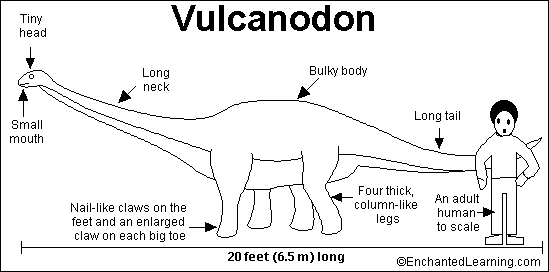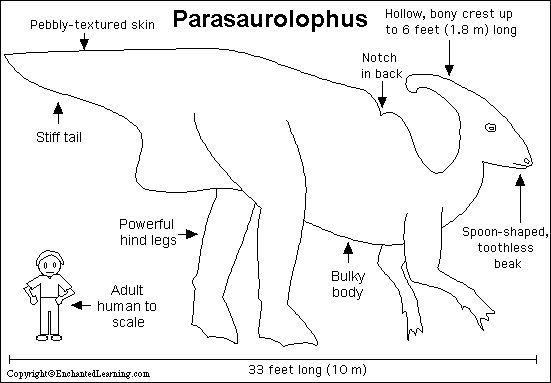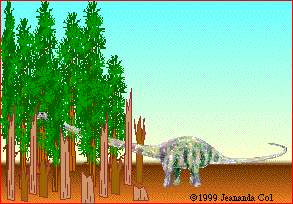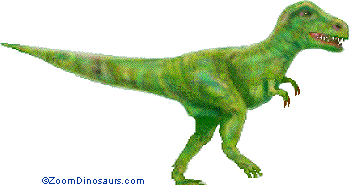This Dinosaur is my ALL TIME FAVORITE. The Caudipteryx was a very small, almost like a peacock, Theropod. (lived about 125 million years ago.)It was a very original and remarkable because of it's strange feathers on it's tail and it's arms. Caudipteryx were identified by Philip J. Currie. It is believed (because of it's feathers), that the Caudipteryx's ancestors were flying dinosaurs. It is definitely a herbivore. The Caudipteryx is closely related to the Oviraptoridae (O-Raptor). Caudipteyx had a small skull that retained only a small number of teeth in the upper jaw. It's skeletons can be found in Pennsylvania, Indiana, Ohio, and Alabama. Paleontologists believe that the Caudipteryx bones look not to be dinosaurian at all, but those of a bird. ??????? The dinosaur was descended from it's ancestor Archaeopteryx.
Jul 13, 2011
Jul 12, 2011
Dinosaurs: Vulcanudon
Dinosaurs:Vulcanudon
 The Vulcanudon dinosaur is a realy early Sauropod. Vulcanudons were herbivores meaning plant eaters. They were about 20 ft long. It had nail like claws on each of it's feet, and had one extra large nail on each big toe. The Vulcanudon was the Roman God of Fire. Vulcanodon was named by Raath in 1972.
The Vulcanudon dinosaur is a realy early Sauropod. Vulcanudons were herbivores meaning plant eaters. They were about 20 ft long. It had nail like claws on each of it's feet, and had one extra large nail on each big toe. The Vulcanudon was the Roman God of Fire. Vulcanodon was named by Raath in 1972.
pronounced (Vul-Kan-Uh-Don)
Dinosaurs: This is just some good music to listen to when you're reading my blog!
Bruno Mars Count on me. It is definitely one of my favorite songs. I thought you would like to listen to some good music while you read about dinosaurs! I sure do! It can't get much more better than that. BRUNO MARS AND DINOSAURS <3
Jul 11, 2011
Dinosaurs: Torosaurus
It had the second-largest skull of any animal, 8.5 ft. One short horn above its parrot-like beak and two longer horns above its eyes provided protection from predators.
Dinosaurs: The Cretaceous Period
Most of the known dinosaurs lived during the Cretaceous period. The Cretaceous Period lasted from 144 to 65 million years ago. During this time, mammals arrived, flowering plants evolved and changed the landscape. There was a high level of activity (continental plate movement) and volcanic activity.
The Cretaceous period ended 65 million years ago with the extinction of the dinosaurs and many, many other prehistoric life forms. The Triceratops was the most known dinosaur in that period.
The Cretaceous period ended 65 million years ago with the extinction of the dinosaurs and many, many other prehistoric life forms. The Triceratops was the most known dinosaur in that period.
| Triceratops (: |
Dinosaurs: The Pentaceratos and Parasaurolophus
THE PENTACERATOPS
 Parasaurolophus was a bus-sized dinosaur that had a long, bony head crest that may have used to make sounds. This plant eating dinosaur lived during the late cretaceous period, about 76-65 million years ago.Parasaurolophus means "beside crested lizard." It was named by Dr. William A. Parks in 1922. Parasaurolophus fossils have been found in North
Parasaurolophus was a bus-sized dinosaur that had a long, bony head crest that may have used to make sounds. This plant eating dinosaur lived during the late cretaceous period, about 76-65 million years ago.Parasaurolophus means "beside crested lizard." It was named by Dr. William A. Parks in 1922. Parasaurolophus fossils have been found in North
The Pentaceratops was a rhinoceros like plant-eating dinosaur. It walked on four Bulky legs and had three horns on its face along with a large bony plate coming from the top of it's head.Pentaceratops lived during the late cretaceous period, about 75-65 million years ago.Pentaceratops was an herbivore, a plant eater. Pentaceratops was discovered by paleontologist Henry F. Osborn in 1923. Fossilized Pentaceratops skulls have been found in New Mexico USA.
THE PARASAUROLOPHUS (:
America. (Alberta Canada, And in Mexico,)
Dinosaurs: Sauropods
Sauropod means "Lizard footed". Sauropods were basically four legged, large, herbivores. They had long necks, small heads with blunt teeth, and long tails for counter-balancing their necks. Their nostrils were located on the top of the skull, some very close to their eyes. Some of the later Sauropods had large and heavy like body armor.
Why were their necks so long?
No one No's exactly why the Sauropods had such long necks. The longest neck of a sauropod on reord was a MAMENCHISAURUS, who's neck was 46 feet long, over half of the dinosaurs body length. Some Sauropods kept their neck stance up like the modern day girraffe does now. Like the Ultrasauros, Sauroposeidon, and the Brachiosaurus. While otherskept their neck parallel to the ground. Like Diplodocids. 

Sauropods appeared in the late Triassic period. They became extict by the Cretacious period. (65 million years ago.) Sauropods have been found in every continet except for Antartica. They are the largest land animals ever discovered.
Some of the Dinosaurs in te Sauropod period are:
Amargosaurus, Apatosaurus, Barosaurus, Branchiosaurus, Camarasaurus, Diplodocus, Jenenschia, Mamenchisaurus, Paralittan, Quaesitosaurus, Saltasaurus, Seismosaurus, Supersaurus, Ultrasaurus, Vulcanodon, and Zigongosaurus.
And I am sure that there will be more Sauropods found in the future!
Subscribe to:
Posts (Atom)

